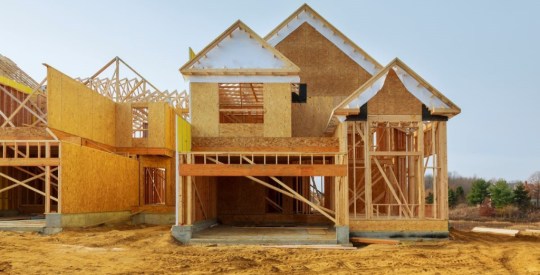While super committees, downgrades and new presidential candidates dominate Washington’s attention, the future of housing finance is waiting for resolution — still. The closest Congress has come to addressing the future of the still laboring government-sponsored enterprises has been two rounds of bills from House Republicans that, according to the Federal Housing Finance Agency, largely replicate conservatorship policies already in place. In the meantime, Redwood Trust (RWT), the only issuer of a privately funded mortgage-backed security since the collapse, recently warned the government’s 95% market share the housing space is “not sustainable.” William Walker, the CEO of Walker & Dunlop, a large multifamily mortgage financier, said private dollars are simply waiting to see what Washington will decide. “I think the private-label market could come back quite vigorously even if they knew Fannie and Freddie would continue on business as usual, but with such a huge change looming, they’re just waiting to see what it will look like,” Walker said in an interview with HousingWire. W&D’s loan originations totaled $1.3 billion in the second quarter, a 95% increase from last year. It was also the largest total in the company’s history, and the firm said it is on track to originate $3.5 billion in new loans for the year. Walker said with industry trade groups such as the National Association of Realtors and the Mortgage Bankers Association backing plans to extend the elevated conforming loan limits, the Obama administration is listening and could move forward with new proposals to reform Fannie and Freddie. Even the House Financial Services Committee Chair Spencer Bachus (R-Ala.) said he was waiting for such a proposal from the administration. “I think the Obama administration is starting to see the tide turn toward the industry wanting to keep the government involved, so they may come out sooner rather than later and put forth reforms of Fannie and Freddie’s role instead of trying an entire replacement,” Walker said. Whatever the new marketplace will look like in the future, other industry players are urging Congress not to uphold the status quo. Matthew Ostrander, the CEO of Parkside Lending and Loren Picard, senior managing director, for LMA Capital, said those pushing for “a return to normal” will be disappointed. “The ‘comeback’ crowd is planning for life as it was before the great crunch. They believe that when the government exits the mortgage market by withdrawal of its support for the agencies, rates can rise, and the economics of the old way of structuring private label nonagency securities will return. It won’t happen this way,” they said in an upcoming commentary for HousingWire. “Just looking at the key components of the industry — originators, servicers, rating agencies, aggregators, issuers, investors, etc. is proof enough that the good old times will not return.” One sign is the vastly stricter lending standards. Analysts at JPMorgan Chase (JPM) said mortgages originated over the past two years hold some of the highest credit quality in history. They looked at the current loans being originated and found an average 758 FICO score. Roughly 20% of the borrowers are given a loan-to-value ratio of less than 80%. Most, the analysts said, were refinanced through the Home Affordable Refinance Program. Still, given the calls for action within the industry and even within some corners of congressional committees, Walker at W&D, said ongoing woes at many banks could keep the private market from immediately forming, echoing what the Obama administration has said all along: Whatever happens needs to be done sensibly and gradually. “The idea that a fully private system actually takes shape is very difficult to imagine at this point in time,” Walker said. Write to Jon Prior. Follow him on Twitter @JonAPrior.
Private-label mortgage market in waiting game
Most Popular Articles
Latest Articles
New-home sales fared well in March
Market headwinds haven’t dampened demand as the annualized sales rate grew 8.8% from February
-
Download these 9 real estate prospecting letter templates that actually work
-
14 powerful tips to master networking as an introvert in real estate
-
Fintech startup Hitch rolls out white-label HELOC product
-
6 best real estate schools in Washington (WA) for 2024
-
Rick Roque departs CrossCountry Mortgage to join Sierra Pacific



